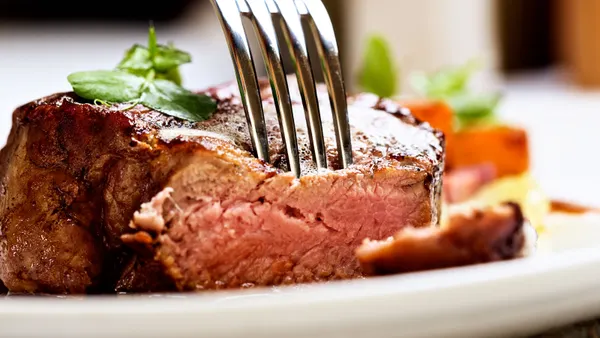UPDATE: March 16, 2020: Cicis has emerged from Chapter 11 protection, completing the process in less than two months, according to a press release. Its reorganization coincides with its agreement to be acquired by D&G Investors, a newly formed affiliate of SSCP Management and Gala Capital Partners. This new ownership group owns and operates over 200 restaurant locations across its portfolios. The sale to D&G Investors includes Cicis Enterprises, JMC Restaurant Distribution and all of its assets and subsidiaries.
Dive Brief:
- Cici's declared Chapter 11 bankruptcy on Monday, following a sharp decline in revenue and EBITDA related to the impact of the pandemic, according to court filings.
- Cici's revenue declined about 57% to $76.3 million with an adjusted EBITDA of negative $2.7 million in 2020, Cici's Chief Financial Officer Richard Peabody said in a court filing. Comparatively, its revenue was $177.3 million and adjusted EBITDA was positive $14.2 million in 2019. As of Dec. 11, the company had about $82 million in debt outstanding.
- Buffet brands like Cici's have struggled as consumers tended to steer clear of the self-service experience during the pandemic. Garden Fresh Restaurants shuttered operations last year following Chapter 7 liquidation. Rave Restaurants, which includes its buffet style Pizza Inn, is also facing delisting warnings from Nasdaq after its stock price fell below $1 per share in late December.
Dive Insight:
Prior to the pandemic, Cici's was in the midst of changing its operations in response to increased competition — especially during the lunchtime hours — and changing demographics, with millennials preferring to order takeout or delivery rather than dine in, Peabody said. The company added digital ordering and delivery service to reach customers over the last few years, but its reliance on third-party aggregators and delivery platform impacted margins and may decrease customer loyalty over the long term, Peabody said.
It also dramatically reduced its store count over the last decade from a high of 650 locations in 2009 to now 318 locations. Much of CiCi's plan was converting its company-owned units to franchisees to create an asset-light model, Peabody said.
It began to streamline its business model in 2019 and early 2020, and the company designed a "reshape plan" to improve its overall economics. This included shuttering one of its three distribution centers to consolidate operations.
As part of its response to the pandemic, the company expanded off-premise with added carryout, delivery and curbside pickup. It also refocused its marketing on digital advertising, the restaurant’s value-oriented experience and promotions to target its customer demographic, Peabody said.
"Given that on-premises dining had traditionally accounted for approximately 86% of sales at CiCi's restaurants, the shutdowns delivered a sudden and significant blow to the business's liquidity position," Peabody said. "The Company's projections demonstrated that, to weather this environment, it needed to take immediate action to preserve liquidity and weather the worsening storm."
Its financial preservation strategy included switching entirely to a takeout and delivery model, temporarily or permanently closing locations, cutting pay for executives, furloughing or laying off employees, canceling and diverting certain incoming orders, ceasing rent payments and implementing aggressive discounting campaigns to maintain its market share.
But that wasn’t enough to stave off its growing debt. Cici's initial group of lenders ended up selling its debt to D&G Investors late last year. As part of its discussions with D&G Investors, Cici's agreed to a pre-packaged and expedited Ch. 11 process in which its plan would be confirmed within 45 days. Under its restructuring plan, D&G will convert its secured debt into 100% of new equity interest in the reorganized Cici's, Peabody said.












